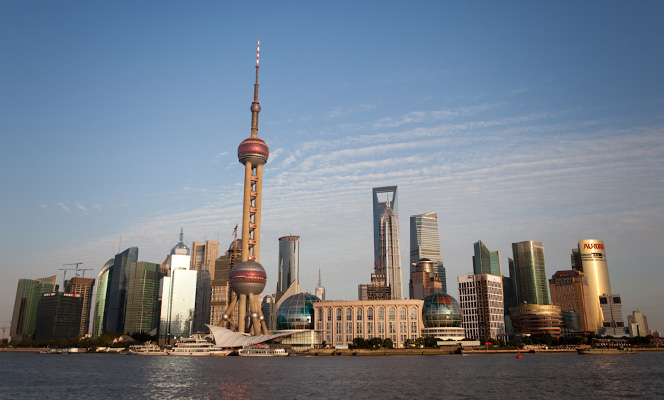The Future is Already Here
 Image: Jens Schott Knudsen
Image: Jens Schott Knudsen
The Asia-Pacific is set for big changes by 2020, says John Lee. But don’t be surprised if geopolitically it looks much as it does now.
There is almost universal agreement that the centre of power is shifting from the Atlantic to the Pacific Oceans in what is rapidly becoming the ‘Asian Century.’ But although the world was aware of the East Asian miracle and the rise of Southeast Asian economic tigers several decades ago, the shift of power and influence from the West to the East was back then not seen as inevitable, decisive or imminent.
Since then, however, the evidence of a major shift has grown dramatically. In just ten years from now, well over half the world’s population of almost 8 billion people will live in Asia. By 2020, if recent trends continue, three of the five largest economies in the world–China, India and Japan–will be Asian, and there will be more middle class consumers in Asia than there will be in America and Europe combined. Although still lagging North America, Asia will by then also have overtaken Europe in terms of regional defence spending, while six or seven of the top ten largest militaries in the world will be in Asia.
We are also entering new ground. Asia has not seen a strong Japan and China–let alone India–in existence at the same time for two centuries. The last time we saw such dramatic shifts in power, with the rise of Imperial Germany at the end of the 19th century and of the Soviet Union in the middle of the 20th century, the world suffered through two world wars and one Cold War. It’s these echoes of history that prompted US scholar Aaron Friedberg to write a now famous article asking whether Europe’s past would be Asia’s future.1 Indeed, it’s largely apprehension about the ramifications of a changing landscape and the potential ensuing chaos that has prompted Australian Prime Minister Kevin Rudd to propose an Asian Pacific Community institution that will meet to discuss the full ambit of security matters in the region. Implied in almost all speculation about, and proposals for, the region is that existing structures and arrangements, particularly the ‘San Francisco’ or ‘hub and spokes’ model of security relations with the United States at the centre, will become outdated and eventually obsolete.
So what will the geostrategic landscape in Asia look like in 2020? Spare a thought for current policymakers. Although it’s standard practice to rely on extrapolating from linear trends, they’ll have to accept that such analyses will almost certainly be wrong. All we can do, therefore, is try to reduce the number of unpredictable variables. But in doing this it becomes clear that although tremendous shifts in relative power will undoubtedly take place, for a number of reasons unique to Asia, the geostrategic landscape of Asia in 2020 could very well look surprisingly similar to the one that’s currently in place. Not a fashionable view, but perhaps an accurate one.
It’s about China… but not in the way you might think
In 2007, Singapore’s Minister Mentor Lee Kuan Yew caused outrage in China when he argued that while China’s rise caused regional apprehension, Asia remains remarkably unruffled by India’s rise.2
He has a point. The assumption is that China and India will be the new great powers in the Asia-Pacific, alongside established powers—the United States and Japan. The second tier is likely to consist of states such as Indonesia, Vietnam, South Korea and perhaps Australia. Trouble spots remain–North Korea and Myanmar–and there’s still uncertainty over issues such as the future of Indonesia. But if China were taken out of this equation, neither the rise of India nor any of these other issues would cause strategists to ponder whether there’d be a fundamental dismantling of the current security system or the US-backed open, liberal order.
At most, a declining America would perhaps grudgingly take its place as a ‘first amongst equals’ in Asia rather than remain in the position of uncontested dominance that it has held for decades. Washington would be forced to–perhaps gladly–offer a greater constabulary naval role to New Delhi and Tokyo (but would not happily extend the same to Beijing). Jakarta, Hanoi and Seoul might be offered more prominent seats in existing or yet to be built regional institutions. But there’d be no serious or willing challenger to US strategic primacy or the American led liberal order since there is little evidence that it’s in the interest (or part of the disposition) of these states to want that role.










